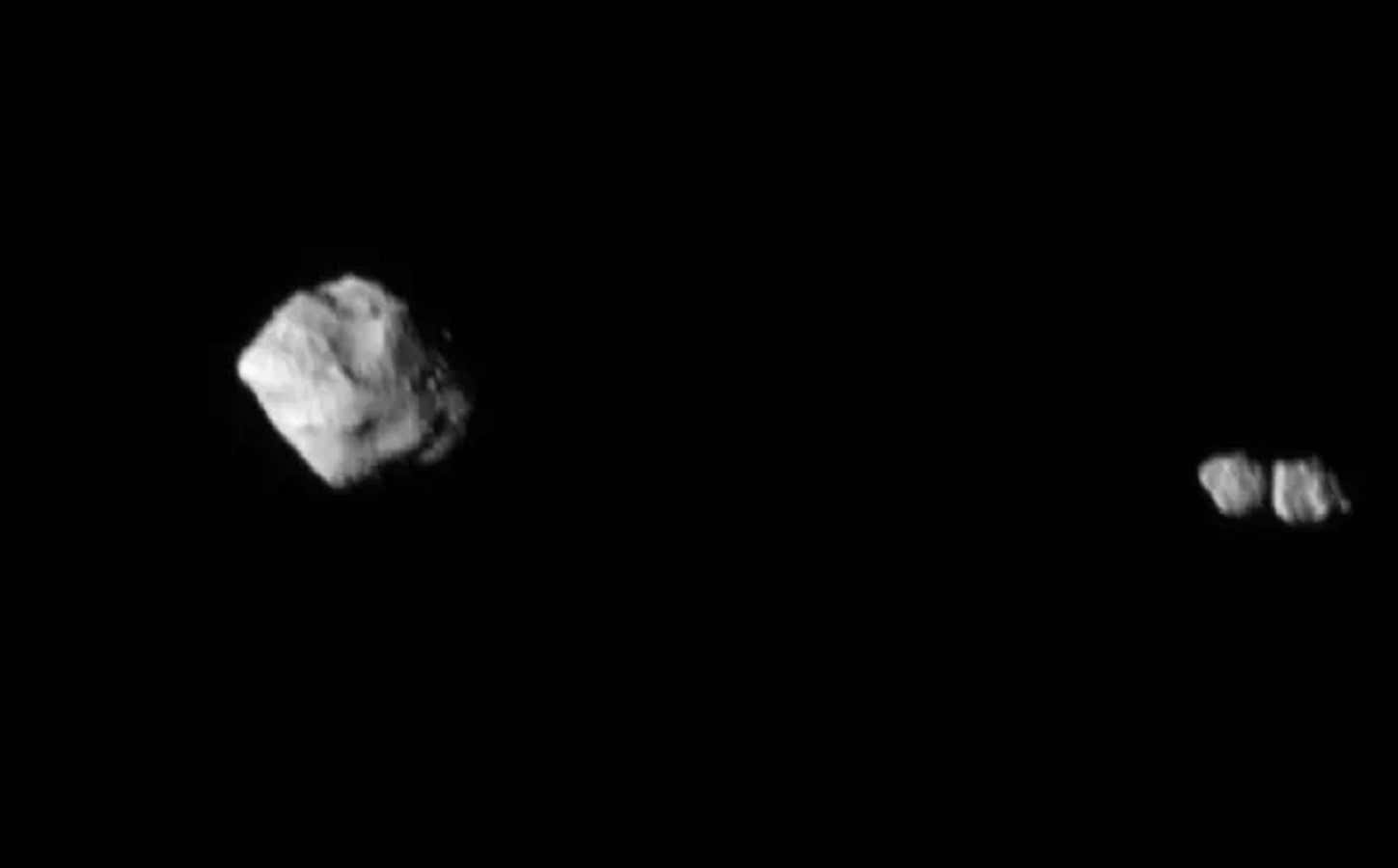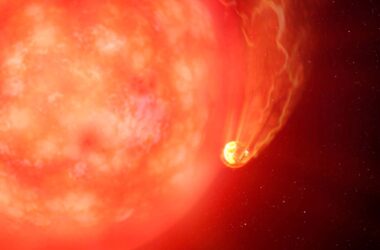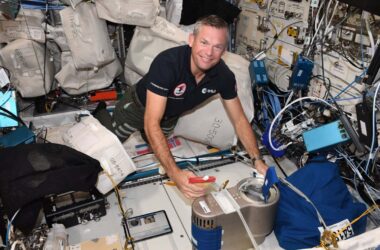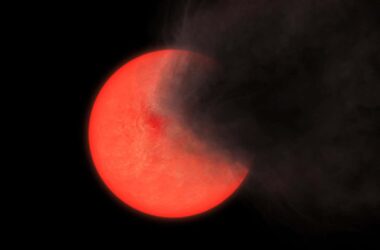The asteroid Dinkinesh has been found to have a binary moon system, consisting of two objects that are lightly touching at their ends. This discovery marks the first time that such a binary system has been observed orbiting another asteroid.
NASA’s Lucy spacecraft encountered Dinkinesh on November 1 during its mission. Initially, the spacecraft identified a smaller rock orbiting Dinkinesh, which was named Salam by the Lucy team. However, further analysis of the data sent back to Earth revealed that Salam is not a single object but rather two similar-sized rocks connected at one end, creating a peanut-like shape. The structure was initially overlooked because one part of the asteroid was hidden behind the other in the images captured by Lucy.
This discovery has raised questions for scientists. The processes that shape these small satellites are not expected to produce multiples of the same size. Additionally, for the two rocks to be connected in this manner, they would have had to collide at extremely low speeds. Hal Levison, head of the Lucy mission at the Southwest Research Institute, finds these properties of Salam intriguing and believes they may challenge our current understanding of how planets form.
The Lucy spacecraft is set to visit eight more asteroids during its mission, including one in the main asteroid belt and seven Trojans, which are asteroids that share Jupiter’s orbit. Levison predicts that there will be more surprises and additional satellites yet to be discovered. Each of these systems has its own unique characteristics and evolutionary history, providing valuable insights into the formation of solid bodies in space.
Insights:
- This is the first time a binary moon system has been observed orbiting an asteroid.
- The discovery of the binary moon system challenges current theories about the formation of small satellites.
- The collision that connected the two rocks would have occurred at extremely low speeds.
- The structure of Salam indicates possible gaps in our understanding of planetary formation.
- The Lucy spacecraft will continue its mission to explore more asteroids, expecting to find more surprises.








